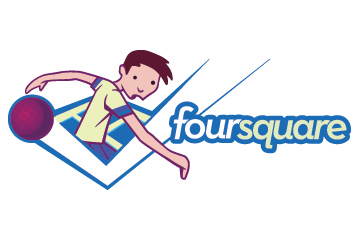TEDWomen and Workplace Femaleness
Last week I completed my TEDWomen application. While no application questions specifically address gender, outlining my greatest achievements or imagining how a friend might describe me in the context of the conference has inspired me to do a substantial amount of personal navel gazing about my gender and specifically women in the workplace. As you might have guessed, this post won’t be about WOM so keep reading if you dare.
There was an active debate around having a separate TED conference on women – largely sparked by some awkward text that was used to introduce the notion of the event which is now resolved. I was torn less by the existence of such a conference and more by whether or not I would actually enjoy attending. God help me for admitting this, but I reacted very negatively to Eve Ensler’s performance at TED 2010. The work felt like it was directly pandering to the guilt of the powerful and largely male audience (who gave her an instant standing ovation). I sat and clapped politely. It was similar to the cringey feeling I had when watching the I am Woman karaoke scene in Sex and the City 2 and wanted to yell at the screen “I am NOT like you”. Meanwhile, lots of woman at TED 2010 inspired me greatly – including games researcher Jane McGonigal , the unique perspectives of Temple Grandin, and grand dame ocean-pioneer Sylvia Earle. Gender had nothing to do with their work or what they spoke about. So, am I uncomfortable with women who use their femaleness as a “hook” for work, artistic expression, or popularity? For whom it is their “shtick”? Am I a self-hater who wants to be a man deep down? No, indeed.
Being a woman in the workplace comes with its own unique set of opportunities and challenges. I am now of the mind that not discussing it or attempting to ignore its differentness is fruitless and is not going to help me or anyone else excel. From the trivialities of navigating the minefields of workplace dress to gracefully handling assumptions and double standards of others, it is just different. Whenever I get the at-least-weekly well meaning comment “it must be hard to be away from your son so much”, it takes every ounce of decorum I have to maintain a normal tone of voice and reply that while it is, it is also difficult for my male colleagues who have similar schedules and families, but we love what we do and are lucky have strong support at home.
It is this minor epiphany that sparked me to apply. Could I do a better job of understanding, coaching and growing those around me? Could I do more to give back to other women in my community at large and in other cultures? And could I do that more adeptly with more knowledge and ideas? Without a doubt. Regardless of whether or not I make the grade on attendance for this event, the process has certainly made me a bit more thoughtful about who I am as a woman in business and how I choose to handle myself and invest in those around me. I firmly believe there is an authentic path that is neither Devil Wears Prada nor Mary Poppins and, while I am bound to stumble upon it innumerable times, it is a path worth travelling.

 If you’re wondering who owns the eyebrow-lift-inducing
If you’re wondering who owns the eyebrow-lift-inducing or…Why I ‘m Breaking Up with Foursquare
or…Why I ‘m Breaking Up with Foursquare